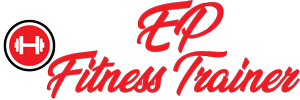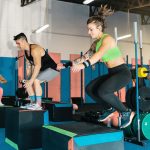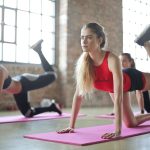Muscle and Fitness magazine was first published by Joe Weider in 1935 as an American fitness, bodybuilding, and lifestyle publication for men. Muscle and Fitness Hers is its companion publication tailored specifically towards female readers.
Strength training makes life simpler — particularly as people age and naturally lose muscle mass. Working with a professional can help individuals stay on track, improve technique and advance workouts as their bodies strengthen.
Strength
Strength is defined as the ability to exert force against physical objects. This encompasses muscles as well as their supporting bones, ligaments and tendons.
Strength can be increased through lifting heavier weights for fewer repetitions, circuit training or bodyweight exercises that target major muscle groups or resistance training with gradually increased resistance and frequency of workouts – but be wary of any sudden spikes that might put you at risk of injury!
Muscular strength changes over time are driven by neural adaptations to resistance exercise. These adaptations include increased firing rates of motor neurons in trained muscles and greater activation of high threshold muscle fibers. Strength also depends on muscle size – when muscles grow they increase their cross-sectional area (CSA) and contractile protein fiber count, making strength gains possible even with advanced age. Research shows that even elderly can benefit from regular resistance training over time although progress usually slows with time. Aim to train all major muscle groups twice every week.
Endurance
Endurance refers to your muscle’s ability to exert force for long periods against resistance, making it essential in many sports and daily activities such as hiking or playing tennis. Furthermore, endurance plays an integral part in maintaining a healthy body weight which contributes to overall wellness.
Strength training exercises that aim to develop muscular endurance typically consist of light to moderate loads with multiple repetitions, like pushups or bodyweight squats, performed under light to moderate loads and at high repetition rates. This type of exercise targets slow-twitch fibers that rely on aerobic metabolism in order to complete multiple repetitions with no fatigue over time.
Increased endurance can help you remain active for longer, which may reduce the risk of heart disease and other health conditions. Exercise that builds endurance may improve cardiovascular function while aiding fat loss. Furthermore, endurance exercise helps speed recovery by decreasing muscle fatigue from workouts caused by lactic acid build-up; however, to avoid injuries and imbalances between endurance training and strength training.
Stamina
Stamina refers to your ability to exert physical or mental effort for extended periods without fatigue, such as playing sports like football or long distance running over an entire game, without becoming tired. But it can also help with everyday tasks, like carrying heavy bags up stairs or playing with children for hours on end.
Muscle endurance refers to the body’s ability to sustain near-maximum effort for an extended period, according to fitness expert and author Jason Fitzgerald. Think about how many body weight squats you can complete consecutively or how far down a mountain you can ski without becoming fatigued – these factors all factor into muscle endurance.
To increase muscular endurance, try engaging in activities like sprint training or lifting heavy for high rep counts in the gym. Be sure to vary up your workouts in order to prevent injury and overuse, and adding regular aerobic exercise as part of a fitness regime can help build up stamina as well.
Flexibility
Flexibility is often undervalued in fitness programs, yet without it you could experience difficulty moving around and increased risks of injury during exercise and everyday activities. Without it you could experience difficulty moving around freely and face difficulty moving your body as intended – potentially increasing injury risks during workouts or simply daily tasks.
Flexibility differs significantly from more general or systemic fitness components in that its effects on individual joints and muscles are much more focused. Because of this, it can be challenging to link flexibility with health outcomes or markers.
Sit-and-reach flexibility tests, the most frequently employed in research, measure only lower back and upper hamstring flexibility by asking subjects to sit with legs straight on floor or mat 8-12 inches apart with feet 8-12 inches apart before reaching forward towards their toes to touch them. While this test provides valuable data regarding overall flexibility and mobility in other joints and muscles of body.
Flexibility training involves engaging in both dynamic and static stretching exercises to develop your flexibility. While increased flexibility may assist with movement and performance, excessive stretching could increase joint instability leading to injury.











